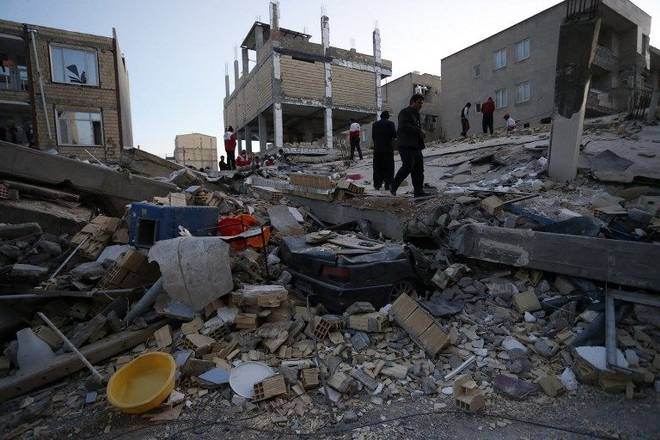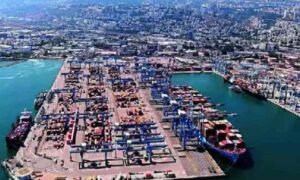
Picture Courtesy : The Hindu
At least 207 people were killed and more than 1,700 injured when a 7.3-magnitude earthquake shook the mountainous Iran-Iraq border triggering landslides that hindered rescue efforts, officials said according to report by AFP.
More than 200 dead in earthquake near Iraq-Iran border https://t.co/XsNQMw6rsW
— The Independent (@Independent) November 13, 2017
Footage posted on Twitter showed panicked people fleeing a building in Sulaimaniyah, northern Iraq, as windows shattered at the moment the quake struck late Sunday, while images from the nearby town of Darbandikhan showed major walls and concrete structures had collapsed.
“There are 164 dead and more than 1,686 injured,” Behnam Saidi, the deputy head of the Iranian government’s crisis unit set up to handle the response to the quake, told state television early in the morning.
Six others were reported dead on the Iraq side of the border.
We are in the process of setting up three emergency relief camps,” said Mojtaba Nikkerdar, the deputy governor of Iran’s Kermanshah province.
The quake hit 30 kilometres (19 miles) southwest of Halabja in Iraqi Kurdistan at around 9.20 pm, when many people would have been at home, the US Geological Survey said.
Iran’s emergency services chief Pir Hossein Koolivand said it was “difficult to send rescue teams to the villages because the roads have been cut off… there have been landslides”.
Death toll rises above 140 in powerful 7.2-magnitude earthquake along the borders of Iran and Iraq, Iran’s state-run IRNA news agency says. https://t.co/GDXYo8NcXv
— The Associated Press (@AP) November 13, 2017
The worst-hit towns in Iran were Qasr-e Shirin in Kermanshah and Azgaleh, about 40 kilometres northwest, the official IRNA news agency said.
It added that 30 Red Cross teams had been sent to the quake zone, parts of which had experienced power cuts.
In Iraq, officials said the quake had killed six people in Sulaimaniyah province and injured around 150.
In Sulaimaniyah, residents ran out onto the streets and some damage to property was reported, an AFP reporter there said.
“Four people were killed by the earthquake” in Darbandikhan, the town’s mayor Nasseh Moulla Hassan told AFP.
A child and an elderly person were killed in Kalar, according to the director of the hospital in the town about 70 kilometres south of Darbandikhan, and 105 people injured.
The quake, which struck at a relatively shallow depth of 25 kilometres, was felt for about 20 seconds in Baghdad, and for longer in other provinces of Iraq, AFP journalists said.
On the Iranian side of the border, the tremor shook several cities in the west of the country including Tabriz.
It was also felt in southeastern Turkey, “from Malatya to Van”, an AFP correspondent said. In the town of Diyarbakir, residents were reported to have fled their homes.
The quake struck along a 1,500-kilometre fault line between the Arabian and Eurasian tectonic plates, a belt extending through western Iran and into northeastern Iraq.
The area sees frequent seismic activity
In 1990, a 7.4-magnitude quake near the Caspian sea in northern Iran killed 40,000 people and left 300,000 more injured and half a million homeless. Within seconds the quake reduced dozens of towns and nearly 2,000 villages to rubble.
Thirteen years later, a catastrophic quake struck the ancient southeast Iranian city of Bam, famed for its mud brick buildings, killing at least 31,000 people and flattening swathes of the city.
Since then, Iran has experienced at least two major quake disasters, one in 2005 that killed more than 600 and another in 2012 that left some 300 dead.
More recently, a 5.7-magnitude earthquake near Iran’s border with Turkmenistan in May killed two people, injured hundreds and caused widespread damage.


















